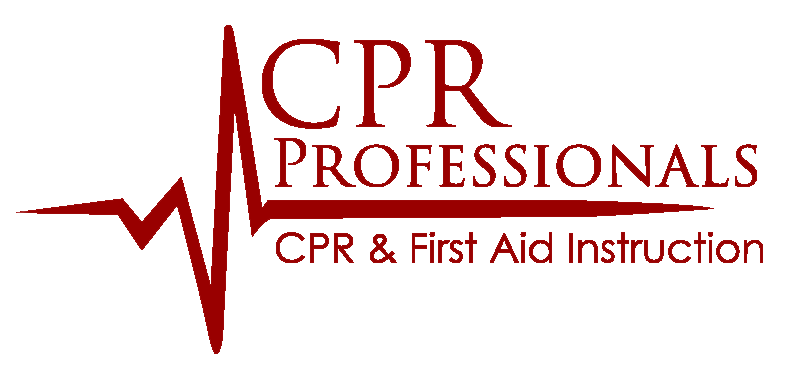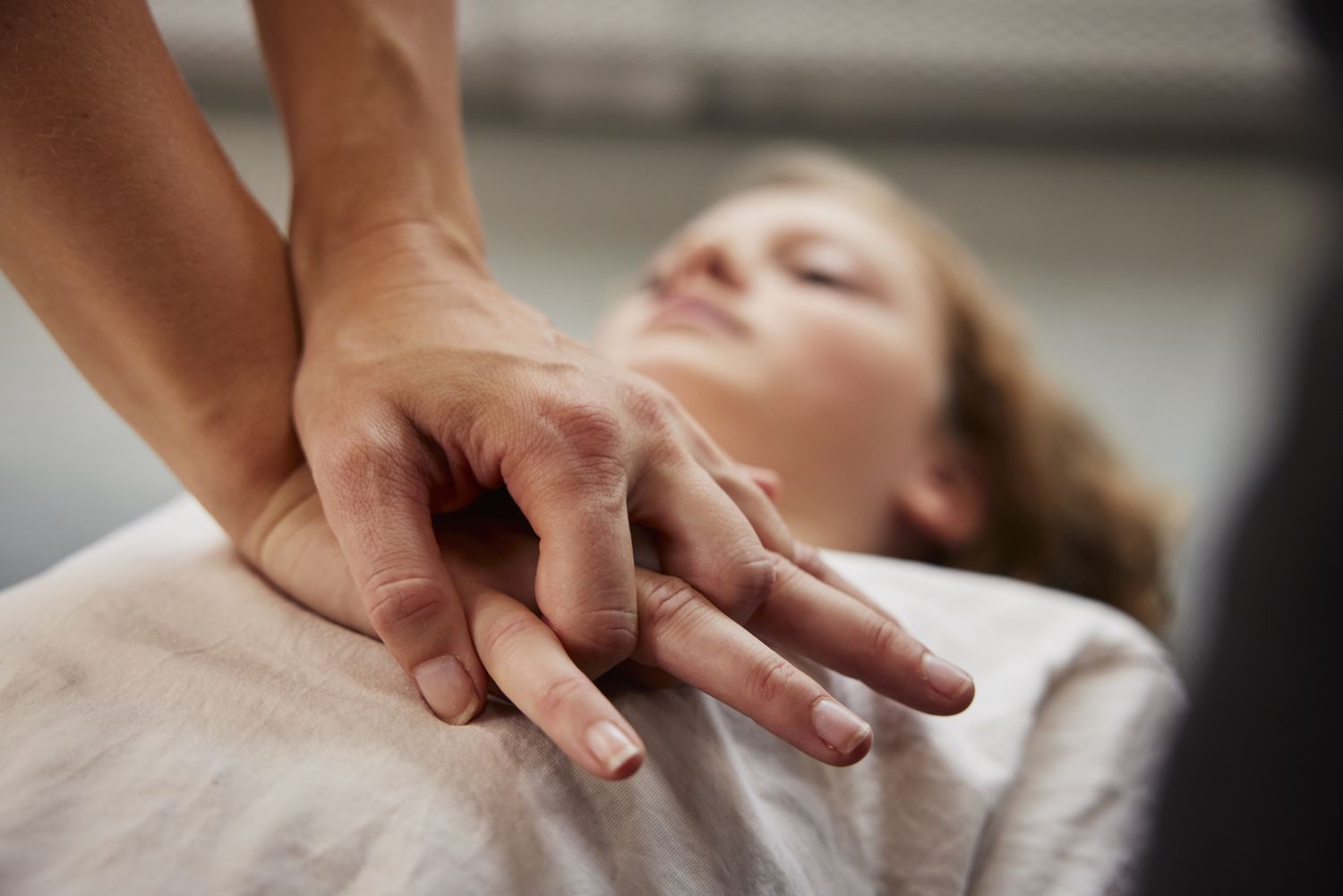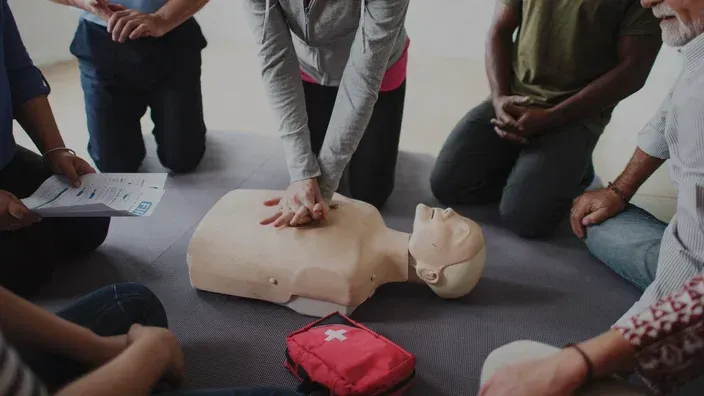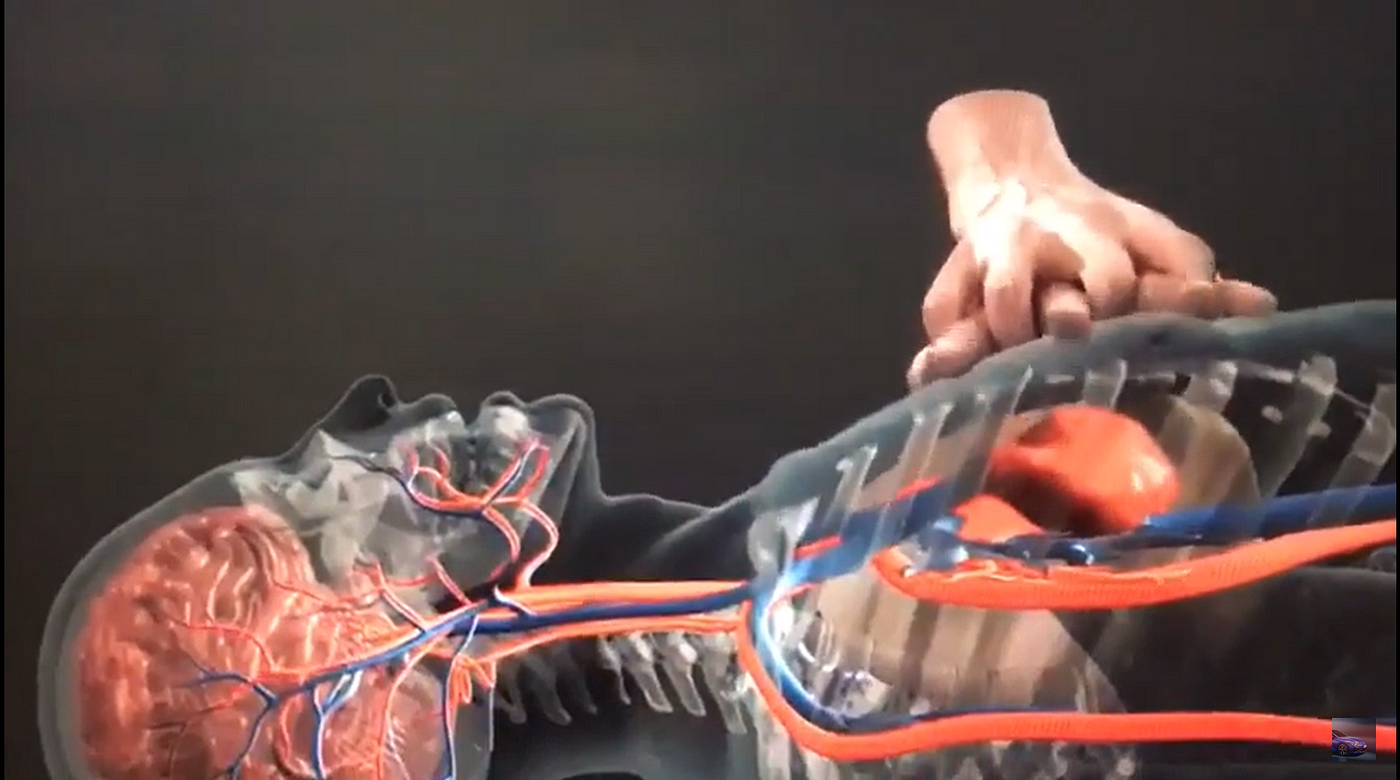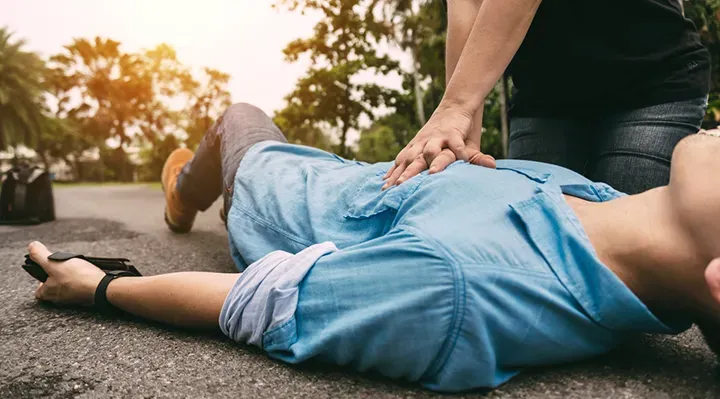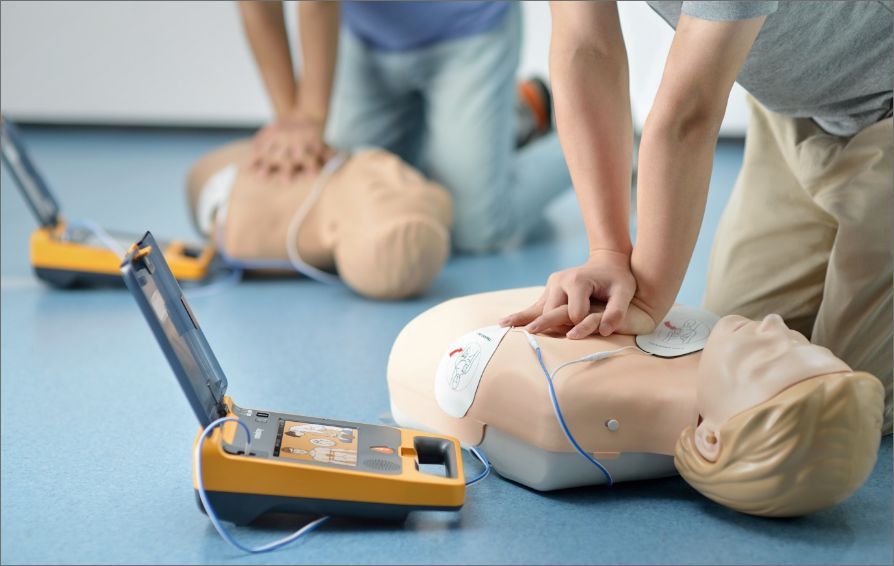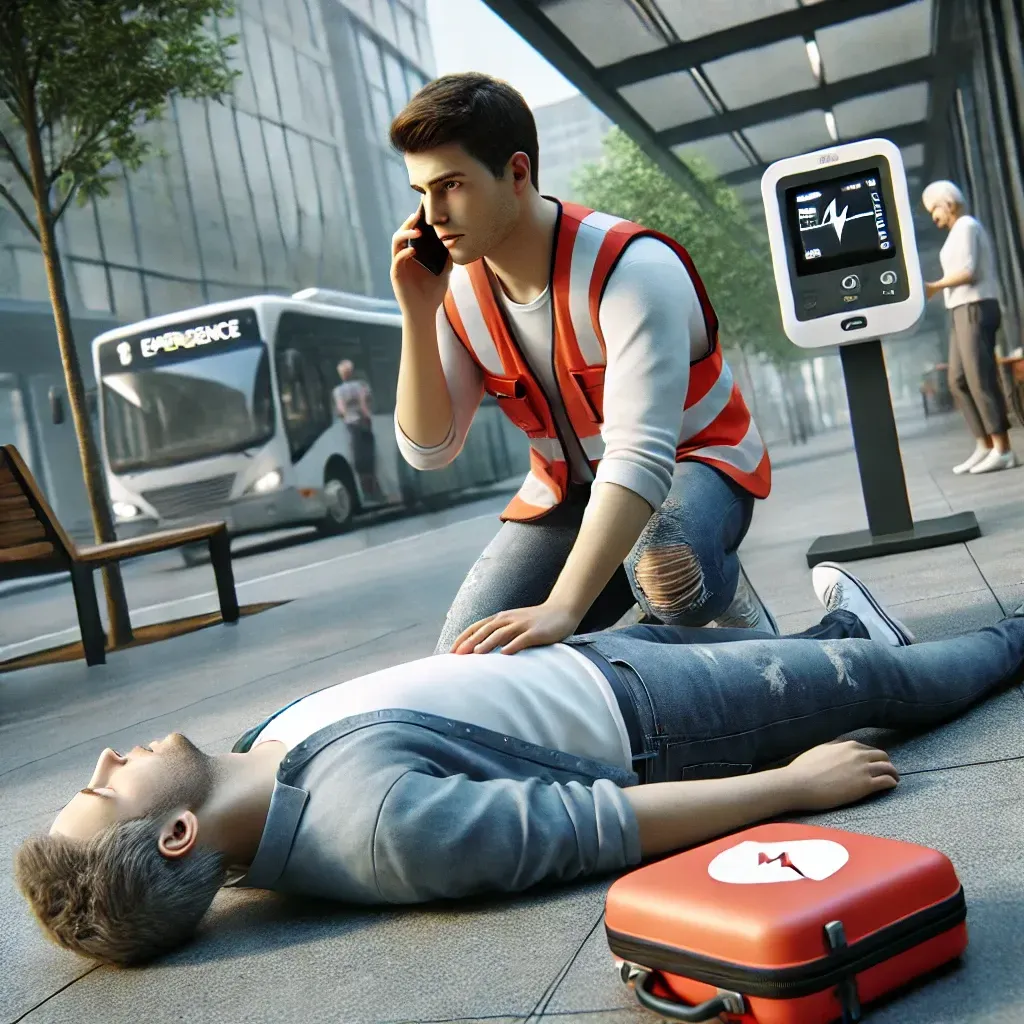Can You Get Sued for Performing CPR Without a License?
Can You Get Sued for Performing CPR Without Certification? Understanding Good Samaritan Laws
Emergencies can happen anywhere, anytime. If someone collapses and stops breathing, quick action can be the difference between life and death. But if you're not CPR-certified, you might hesitate—can you get sued for performing CPR? The good news is that Good Samaritan laws exist to protect bystanders who step in to help. These laws ensure that the fear of legal consequences doesn’t prevent someone from taking action in a life-threatening situation.
In this guide, we’ll explore the legal protections provided by Good Samaritan laws, how the Federal Cardiac Arrest Survival Act applies, and why certification is helpful but not required when providing CPR.
Do You Need a CPR Certification to Perform CPR?
One of the biggest misconceptions about CPR is that you need a
license to perform it. The truth is,
there is no such thing as a CPR license—only
CPR certification. Unlike a professional license, which is legally required for doctors and nurses to practice medicine, a CPR certification is simply a training credential that shows you've learned proper techniques for performing CPR.
So, do you need a CPR certification to perform CPR?
Absolutely not.
CPR certification is valuable, but it is not a legal requirement to help someone in an emergency. If you see someone collapse, you don’t need proof of training to intervene. Good Samaritan laws protect those who act in good faith to provide assistance, even if they don’t have formal CPR training.
Even if you haven’t taken a CPR class, performing hands-only CPR—pushing hard and fast in the center of the chest—can significantly improve a person’s chances of survival. You are legally allowed to perform CPR, and doing something is almost always better than doing nothing.
What Is the Good Samaritan Law?
Good Samaritan laws are designed to protect individuals who provide emergency assistance in good faith. These laws exist to encourage bystanders to help rather than worry about being sued.
In general, these laws offer protection if:
- You act in good faith to assist someone in a medical emergency.
- You do not expect any form of payment or compensation for your help.
- You provide reasonable care within your abilities and knowledge.
Good Samaritan laws exist in all 50 states, but they can vary. Some states specifically mention CPR in their laws, while others provide general protection for any medical assistance given in good faith.
The bottom line: If you are trying to help someone who is unresponsive and not breathing, you are protected by Good Samaritan laws as long as you are not intentionally causing harm or acting recklessly.
The Federal Cardiac Arrest Survival Act (FCASA) and AED Protection
In addition to state-level Good Samaritan laws, there’s a federal law that protects bystanders who help during cardiac emergencies:
The Federal Cardiac Arrest Survival Act (FCASA).
This law was passed to encourage the availability and use of automated external defibrillators (AEDs) in public places. FCASA provides legal protection for people who use an AED in good faith, ensuring that fear of liability doesn’t stop someone from taking action in an emergency.
Here’s why this is important:
- Many businesses, schools, airports, and public buildings now have AEDs available.
- Using an AED dramatically increases survival rates for sudden cardiac arrest.
- Bystanders who use an AED in good faith are
protected by both FCASA and Good Samaritan laws.
Even if you’re not trained in AED use, most modern devices provide step-by-step voice instructions, making it easy for anyone to use them safely.
One of the most common concerns about performing CPR is the fear of accidentally causing harm, such as breaking ribs.
The reality is that broken ribs are a common and expected outcome of effective CPR. This is especially true in older adults, whose bones may be more fragile. However, Good Samaritan laws still protect rescuers because the intent is to save a life.
If a person is in cardiac arrest, their heart has stopped beating, and they are not breathing. In this situation, the risk of death is far greater than the risk of injury from CPR.
Medical experts agree: It’s better to perform CPR—even imperfectly—than to do nothing at all.
What If You Accidentally Injure Someone While Performing CPR?
Why You Shouldn’t Hesitate to Perform CPR
Many people hesitate to step in during an emergency because they fear making a mistake. However, research shows that bystander CPR can double or even triple survival rates for cardiac arrest.
If you’re in a situation where someone needs CPR, remember these three steps:
- Call 911 immediately.
- Start chest compressions—push hard and fast in the center of the chest.
- Use an AED (if available).
You don’t need a CPR certification to do this. Your quick response can make the difference between life and death.
Thanks to the Federal Cardiac Arrest Survival Act, AEDs are becoming more widely available in public places, and bystanders are encouraged to use them. Whether you’re performing CPR or using an AED, you are protected by Good Samaritan laws as long as you act in good faith.
Want to Feel More Prepared? Get Certified Through the American Heart Association
While CPR certification isn’t legally required, getting trained can increase your confidence and skills. The American Heart Association (AHA) offers CPR certification courses that teach proper techniques for:
- Performing chest compressions correctly.
- Using an AED to restart the heart.
- Assisting choking victims.
A CPR course through the
American Heart Association provides hands-on practice and expert guidance, making you better prepared to help in real-life situations.
Whether you’re a parent, teacher, coach, or just someone who wants to be ready in an emergency, CPR certification is a valuable skill that could help save a life.
Final Thoughts: Good Samaritan Laws Protect Those Who Help
If you ever find yourself in a situation where someone needs CPR, don’t hesitate to act.
- Good Samaritan laws protect bystanders from legal consequences when they help in an emergency.
- The Federal Cardiac Arrest Survival Act (FCASA) provides additional protection for those using AEDs.
- You do not need CPR certification to perform CPR.
- Even imperfect CPR is better than doing nothing.
Whether you’re certified or not, taking action could mean the difference between life and death. If you want to gain more confidence, consider getting CPR-certified through the American Heart Association—it’s a small investment that could have a life-saving impact.
